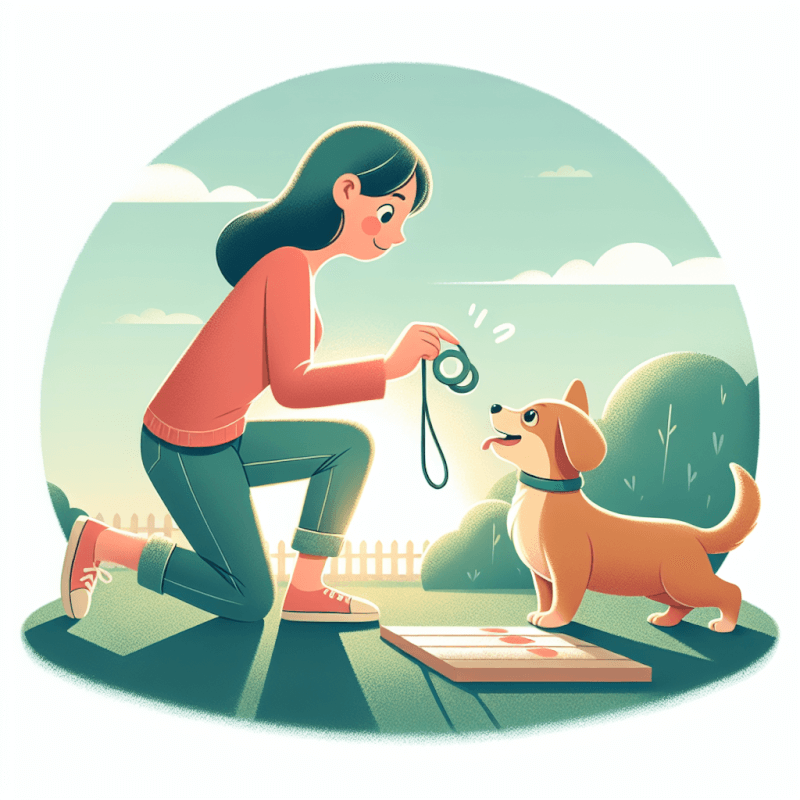If you’ve ever wondered how to effectively train your furry friend, look no further. This article explores the fascinating world of pets training behavior, focusing on the different methods and techniques that can help you establish a harmonious and obedient relationship with your beloved pet. Whether you have a mischievous puppy or a stubborn cat, understanding the principles of pets training behavior can make a world of difference in enhancing their behavior and nurturing a strong bond between you and your furry companion. So get ready to uncover the secrets of successful pets training behavior and embark on a journey towards a well-behaved and happy pet.

Understanding Pet Behavior
As a loving pet owner, it is crucial to understand the behavior of your furry friends. By understanding your pet’s behavior, you can build a stronger bond and create a harmonious living environment for both you and your pet. Additionally, understanding pet behavior is essential for addressing any behavioral problems that may arise. So, let’s dive in and explore the importance of understanding pet behavior.
Ready for Cat Trivia?
Test your knowledge about cats!

The Importance of Understanding Pet Behavior
Understanding pet behavior is the key to building a strong and meaningful relationship with your pet. Pets have their own unique ways of communicating, and by understanding their body language, vocal cues, and instincts, you can better respond to their needs and desires. When you can effectively communicate with your pet, their overall well-being and happiness will be greatly enhanced.
Common Pet Behavior Problems
Just like humans, pets may exhibit certain behavior problems. Understanding these common behavior problems is the first step in addressing and resolving them. Some of the most common pet behavior problems include excessive barking, destructive chewing, jumping up on people, aggression, and separation anxiety. Each of these problems stems from different underlying causes, and it is essential to address and correct them in a positive and compassionate manner.
The Role of Training in Shaping Behavior
Training plays a crucial role in shaping your pet’s behavior. Through consistent and positive training, you can teach your pet good manners and appropriate behaviors. Training helps establish boundaries, builds trust, and improves communication between you and your pet. It also provides mental stimulation for your pet, preventing boredom and destructive behavior. Proper training sets the foundation for a well-behaved and happy pet.
Positive Reinforcement vs. Punishment-Based Training
When it comes to training your pet, it is important to choose the right approach. Positive reinforcement and punishment-based training are two contrasting methods often employed in pet training. Positive reinforcement, which includes rewards and praise, focuses on rewarding desired behaviors, making the learning process enjoyable for your pet. On the other hand, punishment-based training involves reprimanding or using aversive techniques to discourage unwanted behaviors. The use of positive reinforcement is widely recommended as it establishes a bond of trust and strengthens the relationship between you and your pet.
Choosing the Right Training Methods
Finding the best training approach for your pet is crucial to ensure successful training and behavior modification. Each pet is unique, and what works for one may not work for another. Consider your pet’s personality, breed, and individual needs when deciding on the training method. Reward-based training techniques are highly effective and promote positive behavior. These techniques involve using treats, toys, or praise as rewards for desired behaviors. Another popular approach is clicker training, a method that uses a clicking sound to signal to your pet that they have performed the desired behavior correctly.
Reward-Based Training Techniques
Reward-based training techniques are centered around positive reinforcement. This method relies on rewarding your pet with treats, praise, or playtime when they exhibit the desired behavior. By associating positive experiences with good behavior, your pet will be encouraged to repeat those behaviors. These techniques are particularly effective for teaching basic commands such as sit, stay, and come. By consistently rewarding your pet for these behaviors, they will learn to associate them with positive outcomes, making it more likely for them to comply with your commands in the future.
Clicker Training: How It Works
Clicker training is a popular training method that involves the use of a small handheld device called a clicker. The clicker emits a distinct clicking sound when pressed, which is used to mark the exact moment your pet performs the desired behavior. This technique enables you to provide immediate feedback to your pet, signaling that they have done something right. The clicker is paired with treats or rewards, reinforcing the positive association with the behavior. Clicker training can be used for a wide range of commands and tricks, making it a versatile and effective method.
Effective Use of Voice Commands
In addition to clicker training, voice commands play a vital role in pet training. Your tone of voice and choice of words can greatly influence your pet’s response and understanding of the commands. Consistency and clarity are key when using voice commands. It is important to use short, simple commands and to always use the same words for each behavior. Your pet will become familiar with the specific words you use, making it easier for them to understand and respond accordingly. Positive reinforcement, such as treats and praise, should be paired with voice commands to reinforce the desired behaviors.
Teaching Sit and Stay Commands
The sit and stay commands are fundamental commands that every pet should learn. Teaching your pet to sit on command is relatively easy and can be done using reward-based training techniques. Begin by holding a treat above your pet’s head, and as they naturally sit down to follow the treat, say the command “sit” and reward them with the treat. Repeat this process several times until your pet associates the command with the desired action. Stay command is an extension of sit, where your pet remains in the sitting position until given the release command. It requires patience and practice, but with consistent training, your pet will learn to sit and stay on command.

Training Your Pet to Come When Called
The “come” or “recall” command is essential for your pet’s safety and well-being. Teaching your pet to come when called requires building a strong bond and positive association with the command. Start by using a long leash in a secure area and call your pet’s name followed by the command “come.” Use a happy and enthusiastic tone of voice to encourage your pet to come to you. When they do, reward them with praise, treats, or a favorite toy. Gradually increase the distance and remove the leash, practicing the recall command in various environments to ensure reliability.
Mastering the ‘Leave It’ Command
The “leave it” command is invaluable when it comes to preventing your pet from picking up or engaging with potentially harmful objects or substances. Teaching your pet the “leave it” command requires patience and consistency. Begin by holding a treat in your closed fist and presenting it to your pet. When they try to paw or lick your hand to get the treat, say the command “leave it” and close your hand. Once your pet stops attempting to get the treat, open your hand and reward them with a different treat. Practice this exercise with various objects and gradually increase the difficulty to generalize the command.
Walking on a Leash: Teaching Loose Leash Walking
Walking on a leash is an important skill for both dogs and some small mammals. Teaching your pet to walk nicely on a leash without pulling requires consistent training and positive reinforcement. Begin by using a harness or collar and leash and start in a quiet, distraction-free environment. As you start walking, keep the leash loose and reward your pet for staying close by your side. If your pet starts pulling, immediately stop walking and wait for them to return to your side. This teaches them that pulling leads to a lack of forward progress. With practice, patience, and rewards, your pet will learn to walk politely on a leash.
The Importance of Housebreaking
Housebreaking, also known as potty training, is a vital aspect of pet ownership. Teaching your pet appropriate toileting behavior lays the foundation for a clean and hygienic living environment. It is essential to establish a consistent routine and provide ample opportunities for your pet to eliminate in the appropriate designated areas. By understanding your pet’s body language and scheduling regular potty breaks, you can successfully housebreak your pet and prevent accidents inside the house.
Creating a Consistent Routine
Consistency is key when it comes to housebreaking your pet. Establishing a consistent routine helps your pet understand when and where they should eliminate. Take your pet outside to their designated toileting area at regular intervals throughout the day, especially upon waking up, after meals, and before bedtime. Use a specific command or phrase, such as “go potty,” to associate it with the desired behavior. When your pet successfully eliminates in the designated area, reward them with praise and treats. Over time, your pet will learn to associate the command with the act of eliminating, making it easier to reinforce good housebreaking habits.

Crate Training: Benefits and How to Do It Properly
Crate training can be a valuable tool for housebreaking and providing a safe space for your pet. When done properly, crate training can offer numerous benefits, such as preventing destructive behavior, aiding in housebreaking, and providing a secure retreat for your pet. To introduce your pet to the crate, make it a positive and comfortable space by placing familiar bedding and toys inside. Gradually increase the duration your pet spends inside the crate, using treats and positive reinforcement to create a positive association. It is important to never use the crate as a form of punishment and to gradually increase the time your pet spends outside the crate to ensure a smooth transition.
Problem-Solving for Housebreaking Challenges
Housebreaking can sometimes come with challenges, but with patience and problem-solving, these challenges can be overcome. One common challenge is accidents inside the house. If accidents occur, it is important not to punish your pet, as this can create anxiety and hinder the housebreaking process. Instead, clean up accidents with an enzymatic cleaner, as it eliminates the odor that may attract your pet back to the same spot. Review your routine and ensure you’re providing ample opportunities for your pet to eliminate outside. If challenges persist, consult with a professional trainer or veterinarian for additional guidance.
Why Socialization is Crucial for Pets
Socialization is a crucial aspect of raising a well-rounded and confident pet. Exposing your pet to different environments, people, animals, sights, and sounds at an early age helps them feel comfortable and confident in various situations. Proper socialization prevents fear, aggression, and anxiety in your pet and allows them to adapt to new experiences with ease. A well-socialized pet is more likely to have positive interactions with others and be a joy to have around.
Exposing Your Pet to Different Environments and Situations
To socialize your pet, expose them to various environments and situations gradually. Start with controlled and less overwhelming environments before gradually exposing them to more challenging situations. Take your pet on walks in a park, introduce them to different people and animals, and provide positive experiences in different locations. Allow your pet to explore and interact with their surroundings while being there to provide reassurance and rewards. This gradual exposure will help your pet feel more comfortable and at ease in new environments.
Introducing Your Pet to Other Animals
Properly introducing your pet to other animals is essential for successful socialization. Always supervise initial interactions and introduce your pet to other animals in a controlled environment. Monitor their body language and ensure both animals are relaxed and comfortable. Use positive reinforcement and rewards to associate positive experiences with the presence of other animals. Gradually increase the duration and frequency of interactions, always prioritizing the safety and well-being of all animals involved.

Addressing Aggression or Fearfulness in Socialization
If your pet displays aggression or fearfulness during socialization, it is important to address these issues promptly. Consult with a professional animal behaviorist or dog trainer who can help determine the underlying causes and develop a behavior modification plan. It is crucial to avoid any negative reinforcement or punishment-based methods, as these can exacerbate the behavior. With proper guidance and training, aggression or fearfulness can be managed, and your pet can learn to be more comfortable in social situations.
Barking: Causes and Training Solutions
Barking is a natural form of communication for dogs, but excessive or nuisance barking can become a problem. Understanding the underlying causes of barking is the first step toward finding training solutions. Barking can be triggered by boredom, fear, excitement, or territorial instincts. By addressing the cause of the barking and using positive reinforcement techniques, such as rewarding calm behavior, redirecting their attention, or providing mental stimulation, you can effectively reduce excessive barking and create a quieter living environment.
Chewing: Redirecting Your Pet’s Chewing Behavior
Chewing is a natural behavior for pets, but it can become destructive if not properly directed. Redirecting your pet’s chewing behavior involves providing appropriate chew toys and discouraging them from chewing on prohibited items. When you catch your pet chewing on something they shouldn’t, calmly redirect their attention to an approved chew toy and reward them for chewing on that instead. Consistency is key in teaching your pet what is acceptable to chew on and what is not.
Jumping Up: Teaching Your Pet Proper Greeting
Jumping up on people is a common issue, particularly in dogs. Teaching your pet proper greeting manners is essential for establishing boundaries and preventing unwanted jumping. The key is to reward your pet for calm and polite greetings. When your pet jumps up, turn your back and ignore them to remove the desired attention. Once they have all four paws on the ground, reward them with praise and attention. Consistency is crucial, as everyone in the household and visitors should follow this protocol to effectively teach your pet not to jump up.
Separation Anxiety: Tips for Preventing and Managing
Separation anxiety can be distressing for both pets and their owners. To prevent and manage separation anxiety, it is important to gradually acclimate your pet to being alone. Start with short periods of separation and gradually increase the duration. Create a positive association with alone time by providing engaging toys, long-lasting treats, and a comfortable environment. Desensitization techniques, such as leaving and returning without making a big fuss, can also help your pet become more comfortable with being alone. In severe cases, consulting with a professional behaviorist can provide additional guidance and support.

Training Techniques for Dogs
Training dogs requires patience, consistency, and positive reinforcement. Dogs thrive on praise and rewards, so it is important to use these techniques to reinforce desired behaviors. Treat-based training is often effective, where treats are used as rewards for correctly performing commands. Additionally, clicker training can be valuable in shaping a dog’s behavior and teaching advanced tricks. By establishing clear communication, setting boundaries, and ensuring consistency, you can train your dog to be a well-behaved and obedient companion.
Training Tips for Cats
Cats are known for their independent nature, but they can also be trained using positive reinforcement techniques. Start by identifying what motivates your cat, such as treats, playtime, or praise. Use these motivators to reward your cat for desired behaviors, such as using a scratching post or using the litter box. Keep training sessions short and positive, focusing on behaviors that are natural for cats, such as sitting on command or coming to their name. Patience and consistency are key when training cats, and by making training sessions enjoyable, your cat will be more likely to participate and learn.
Training Your Bird to Talk or Perform Tricks
Teaching a bird to talk or perform tricks can be a fun and rewarding experience. The key to successful training lies in positive reinforcement and consistency. Remain patient and reward your bird with treats, praise, or attention when they exhibit desired behaviors or attempts at talking. Consistency in training sessions and using repetition will help your bird grasp the commands or words you are teaching them. Train in short sessions, as birds have limited attention spans, and always prioritize their well-being during training.
Training Your Small Mammal: Rabbits, Guinea Pigs, etc.
Small mammals, such as rabbits and guinea pigs, can also be trained using positive reinforcement techniques. Start by identifying what motivates your small mammal, such as their favorite treats or affectionate praise. Use these motivators to reinforce desired behaviors, such as using a litter box or performing simple tricks. Keep training sessions short, as small mammals have shorter attention spans, and always prioritize their comfort and well-being during training. Remember that each small mammal has their own unique personality, so be patient and adapt your training techniques to their individual needs.
Teaching Your Pet Advanced Tricks and Commands
Once your pet has mastered the basics, it can be exciting to teach them advanced tricks and commands. Advanced training requires building on the foundation of basic training and expanding your pet’s repertoire. Take into account your pet’s physical and mental capabilities when teaching advanced tricks. Consistently reinforce desired behaviors with rewards and gradually increase the difficulty level. Advanced tricks and commands can include things like fetch, roll over, or even more complex tasks like opening doors or turning on lights. Enjoy the bonding experience and have fun exploring your pet’s potential!
Training for Therapy or Service Work
Training your pet for therapy or service work can be a fulfilling experience. Therapy animals provide comfort and support to individuals in hospitals, nursing homes, or schools, while service animals assist individuals with disabilities and specific needs. To train your pet for therapy or service work, it is crucial to work with a professional trainer who specializes in this area. Training programs typically consist of basic obedience training, desensitization to various environments, and specific tasks relevant to the type of work your pet will be doing. These specialized training programs help ensure the safety, well-being, and effectiveness of therapy and service animals.
Agility Training: Fun and Benefits
Agility training is a great way to engage your pet physically and mentally while building a stronger bond. Agility courses typically consist of obstacles, such as tunnels, jumps, and weave poles, that your pet must navigate with speed and accuracy. Participating in agility training provides numerous benefits, including improved fitness, coordination, and mental stimulation. It also strengthens the communication between you and your pet, as you learn to navigate the course together. Whether participating in agility competitions or simply training for fun, agility training is a fantastic way to keep your pet active and entertained.
Addressing Behavioral Issues with Professional Help
In some cases, addressing behavioral issues may require professional help. Professional trainers or animal behaviorists have the knowledge and experience to diagnose and address complex behavioral issues. They can assess your pet’s individual needs, create a tailored training plan, and provide ongoing support throughout the behavior modification process. Seeking professional help is especially crucial for serious behavioral concerns, such as aggression or severe anxiety. With the guidance of professionals, you can effectively address and manage these issues, ultimately improving your pet’s overall well-being.
Consistency and Reinforcement: Keys to Success
Consistency and reinforcement are the keys to successful training and behavior maintenance. Consistency means following through with training commands and expectations each time, regardless of the circumstances. Reinforcement involves providing rewards and positive experiences to strengthen desired behaviors. By maintaining consistency and reinforcing good behavior, your pet will have a clear understanding of what is expected of them and will be more inclined to exhibit those behaviors consistently.
Troubleshooting Regression in Training
Regression in training is not uncommon and can happen for various reasons. It is important to identify the cause of regression and address it promptly. Common causes of regression include changes in routine, lack of consistency, or the introduction of new stressors or distractions. When faced with regression, it is essential to revisit the basics, reinforce training techniques, and provide additional support and guidance. If the regression persists or is particularly challenging, consult with a professional trainer for guidance and further evaluation.
Continuing Training Throughout Your Pet’s Life
Training should not be a one-time endeavor but rather an ongoing process throughout your pet’s life. As your pet grows and develops, their training needs will change. Continue to reinforce the training they have learned and introduce new commands or tricks to keep their mind stimulated. Regular training sessions help maintain the bond between you and your pet and prevent behavioral issues from arising. By consistently providing training and mental stimulation, you are ensuring the happiness and well-being of your pet throughout their life.
Seeking Ongoing Support and Education
As a pet owner, it is important to seek ongoing support and education. Staying up to date with the latest training techniques, understanding current behavioral research, and seeking additional guidance when needed are all crucial to providing the best possible care for your pet. Attend training classes, workshops, or seminars to enhance your knowledge and skills. Joining pet owner communities or online forums can also provide valuable insights and resources. Seeking ongoing support and education will help you further strengthen your bond with your pet and ensure their long-term happiness and well-being.
Conclusion
Understanding pet behavior is essential for building a strong bond, addressing behavioral issues, and providing effective training. By utilizing positive reinforcement techniques, consistent training methods, and seeking professional help when needed, you can effectively shape your pet’s behavior and create a harmonious living environment. Remember to be patient, understanding, and always prioritize your pet’s well-being. With the right approach and consistent training, you and your pet can enjoy a lifelong, rewarding partnership.


